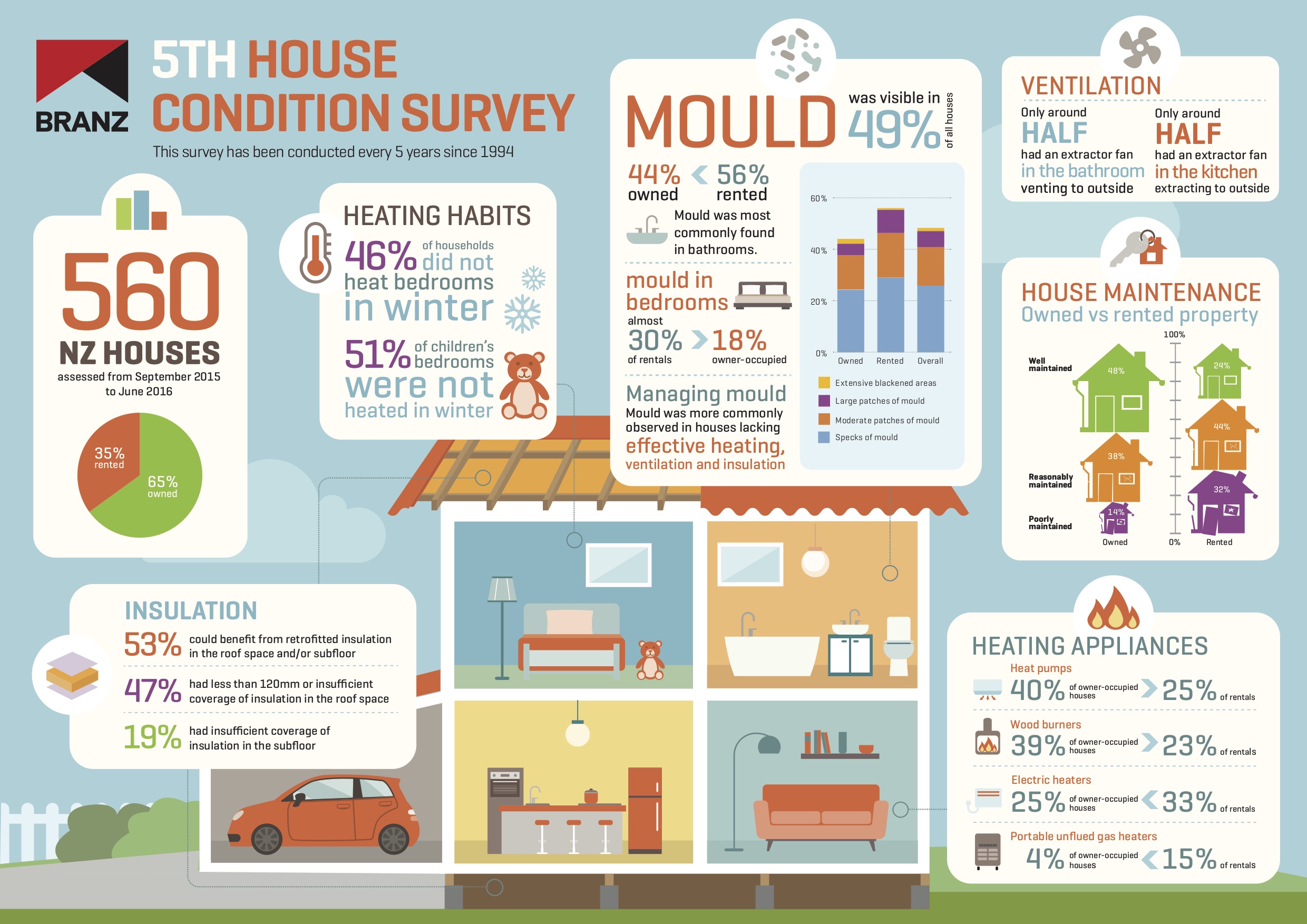Mould
Mould comes from fungi naturally occurring in the air. Fungi can be our friends. It includes mushrooms and the yeasts we use for making bread. But mould in our homes makes us sick.
Just like activating yeast, fungi needs a food source and moisture to grow. This a clue as to how we can reduce unwanted mould growth in our homes. The key is to keep the air and surfaces dry.
Why is Mould so Bad?
Mould grows in damp conditions and it doesn’t take much. Certainly 80% relative humidity (about Auckland’s average ambient condition) is enough. Growing mould is unsightly, but it’s more toxic when it dries out. Dried mould spores can become airborne and that’s when they become a problem for humans. Mould spores in the air are an irritant and can trigger asthma symptoms as well as other respiratory illnesses. Our children and elderly people are particularly susceptible, but we all pay the price.
It’s estimated that in New Zealand, 1,600 people die prematurely each year, mostly in winter, from respiratory and circulatory problems. This is related to the fact that 47% of our homes still lack adequate insulation and 49% are damp and mouldy.
According to EECA, the average household produces about 8 litres of moisture inside a house, each day. That’s a lot of water to get rid of!

How to Reduce Mould in the Home
We really need to design out the conditions that allow mould to thrive. Designing and building a warm, dry comfortable home is absolutely achievable for new houses, but it’s not the reality for the 1.5 million existing houses we live. For most of us who live in old, cold and damp homes, it’s a case of removing the symptoms until we can do a deep enough retrofit to deal with the cause.
Dealing with Mould Daily:
It’s all about removing the symptoms.
- Clean away visible mould with warm, diluted vinegar then rinse away.
- Get rid of excess condensation from surfaces, particularly windows.
- Use dampness absorbers in cupboards and wardrobes.
- Use a dehumidifier where you have to. (If you’re relying on dehumidifying a lot, your house has some serious issues that should be addressed when it’s time to renovate.)
- Open windows when possible to dry out windows and bring in fresh air.
- Use bathroom extractor fans. Keep bathroom fans running for a 10 minutes after you’ve finished showering.
- Use pot lids and extractor fans in the kitchen. I also cook with an adjacent window open.
- Dry clothes outside.
- If drying clothes outside is not an option, use a vented or condensing dryer. Don’t hand washing out in the lounge room.

Dealing with Mould in DIY:
The aim is to maintain indoor relative humidity to between 40% and 65%. This will limit the available moisture in the air and thus limit the ability for mould to grow.
- Check for leaks around the house; inside, outside, in the roof, under the floor and around the perimeter.
- Fix drainage and makes sure downpipes and guttering is all working properly.
- Install a ‘ground vapour barrier’ (black plastic sheet) on the ground under your house if you’ve got an elevated, wooden floor.
- Insulate!
- Install a balanced, whole house home ventilation system.
- Use anti-bacterial or anti mould paint.
- Consider enclosing your shower with something like a Showerdome.
Design it Out
There’s no reason to build a house that will harbour mould. And there’s no reason to add an extension or do a renovation that will be mouldy either.
Apply Passive House design. Make it airtight, then ventilate right! This will guarantee you achieve and maintain the optimum 40% – 65% indoor relative humidity.
People would rather invest in size and space than warmth
Peter Newport, ‘The other housing crisis’ on The Spinoff
Links:
- http://www.health.nsw.gov.au/environment/factsheets/pages/mould.aspx
- https://www.stuff.co.nz/the-press/opinion/69444159/government-must-act-on-unhealthy-houses
- http://www.level.org.nz/passive-design/controlling-indoor-air-quality/humidity-and-condensation/

Leave a Reply